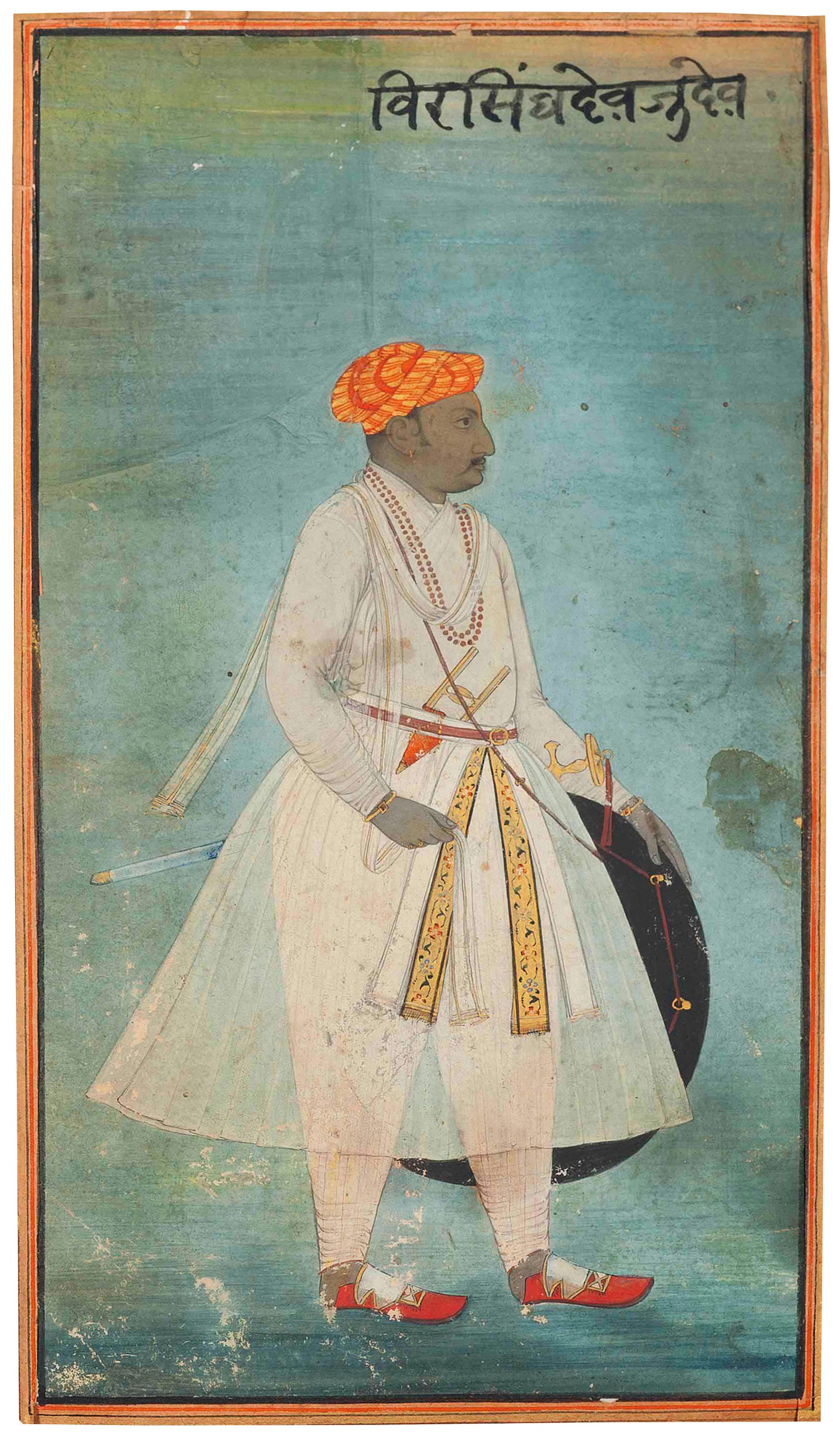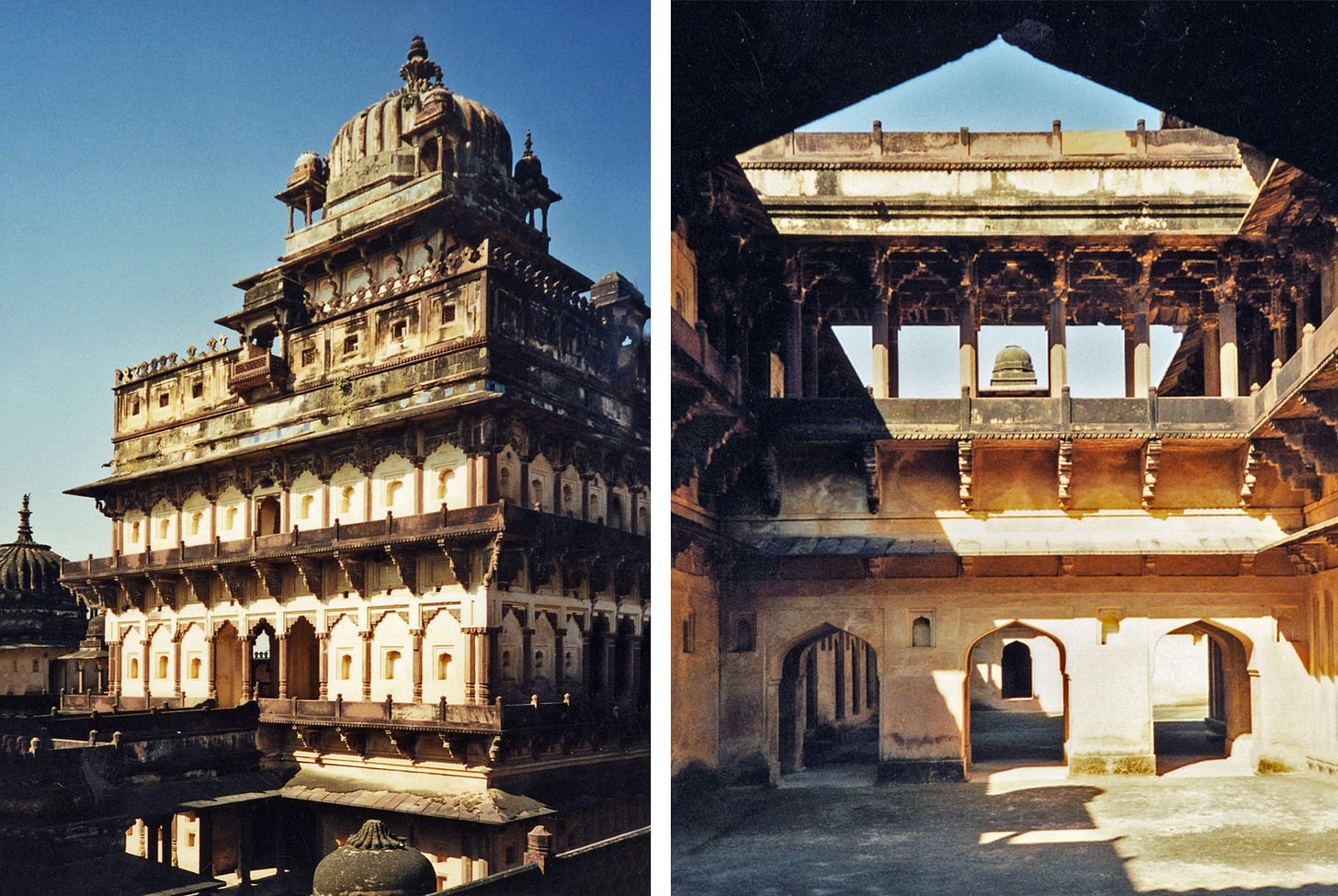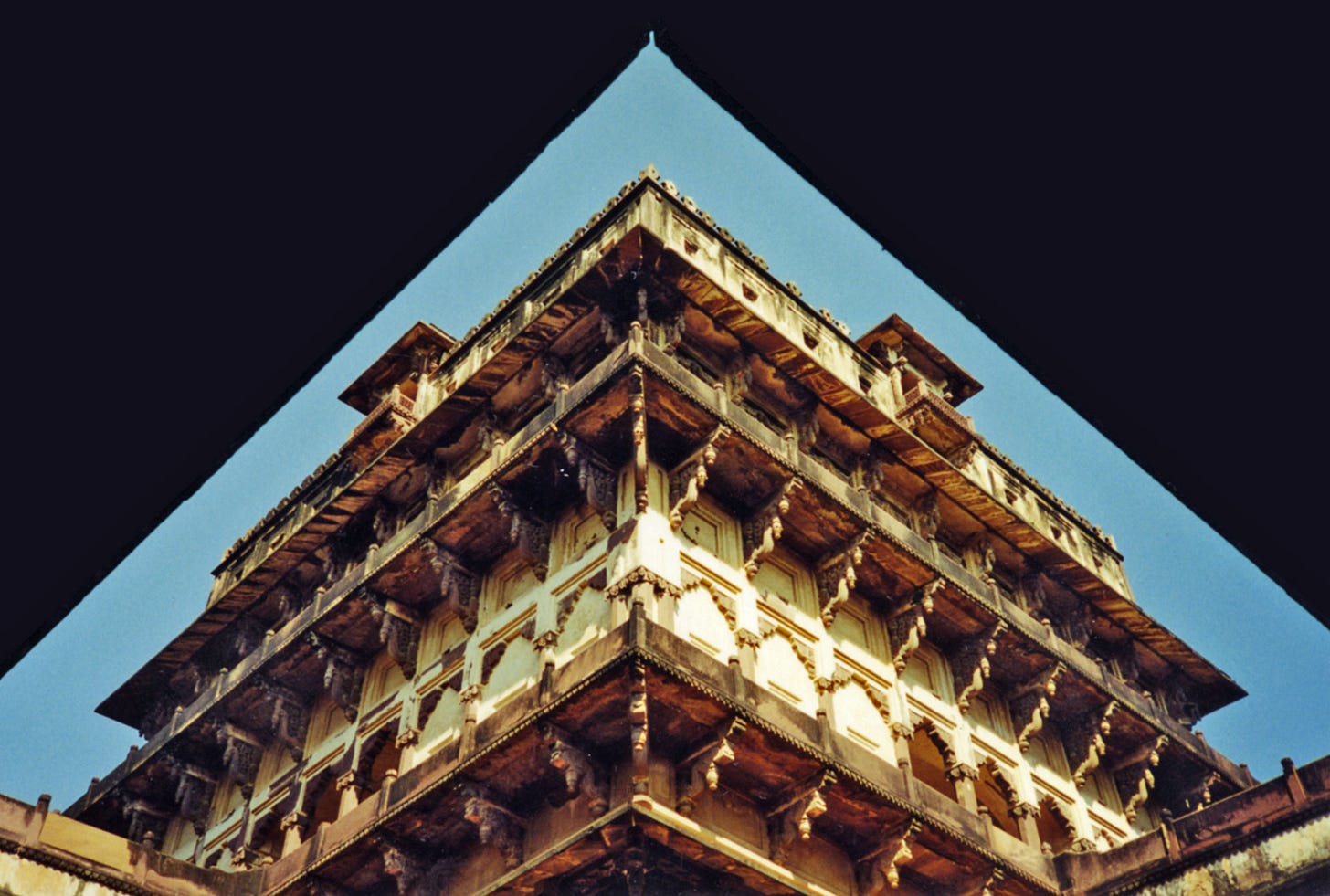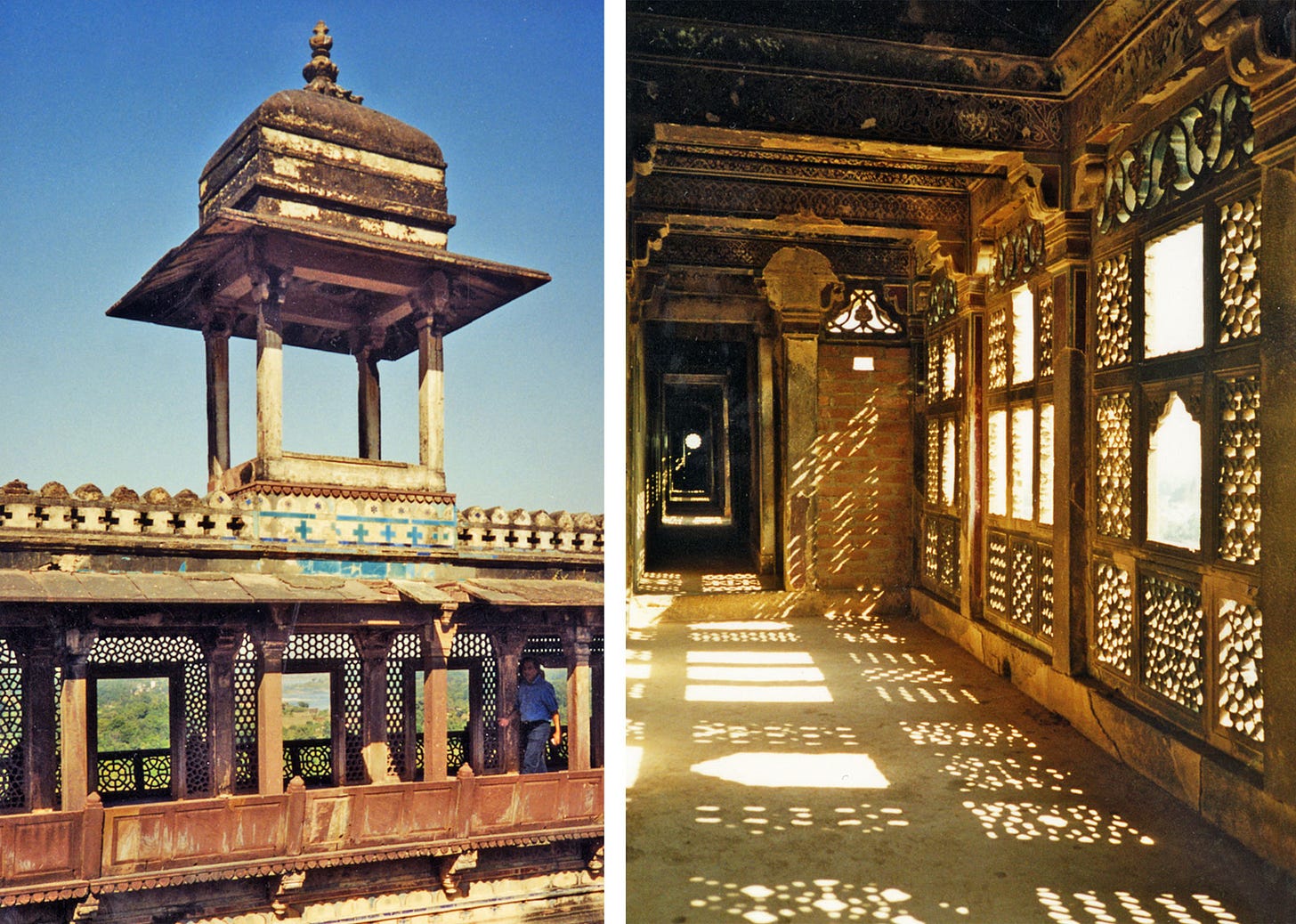I went twice to see these astonishing palaces in the late 90s and have just found my pictures of them. The first time was with a Swiss millionaire, by helicopter from Gwalior, which was extraordinary, flying low across the countryside and then circling around these intricate fantasy structures that I knew from books. The second time was more modest, in a decrepit old Ambassador car, my friend and I bouncing along the rutted roads, sweltering in the heat. It was worth it. Orchha, a beautiful place in the middle of India, with amazing tombs (in the distance, above) by the Betwa river, and a huge palace-fort of around 1580, above, next to which Raja Bir Singh Deo built his Jahangiri Mahal, below, some 30 years later. The palace is perfectly symmetrical on both axes – each side of its square plan repeats – with a romantic silhouette of rooftop domes and chhatris (open pavilions.)
The palace was built to entertain Moghul Emperor Jahangir, whose favour, when still Prince Salim, Bir Singh Deo had won in 1602 by killing Abul Fazl, Emperor Akbar’s chief minister who had urged his master to disown his rebellious son and heir. Bir Singh, seventh of eight sons of the Raja of Orchha, was fighting his brothers and Akbar’s forces too; he went to Salim for support, who greeted him as ‘my two eyes, the strength of my arm, my minister and my friend. I consider only one man as my enemy… Abul Fazl. He is rankling in my heart like a thorn; my friend, pull it out if you can.’
Bir Singh (above) obliged, sending the prince Abul Fazl’s head. ‘You have given a kingdom to me, I shall give a kingdom to you,’ declared the grateful prince, ‘I have become your purchased slave for life.’ Akbar, furious, sent armies after Bir Singh, but all failed; on the emperor’s death in 1605, Jahangir made Bir Singh ruler of all Bundelkhand. He spent his reign of 22 years building 52 structures, among them other palaces, forts, step-wells and a vast Hindu temple at Mathura that the devout Muslim Emperor Aurangzeb destroyed in 1669 along with so many other temples.
Bir Singh’s palace-fort at Datia, 30 miles South of Orchha, is even more extraordinary, and less visited, though cited as the paragon of Hindu domestic architecture. Again completely symmetrical, this square palace has a five-storey domed tower rising in its centre, connected by elegant bridges to each side…
Above, the central tower which held the Raja’s apartments and entertaining rooms; Below, a chattri atop one of the walls with pierced-stone jali screens; a few turquoise-glazed tiles remain, presumably they were once everywhere.











